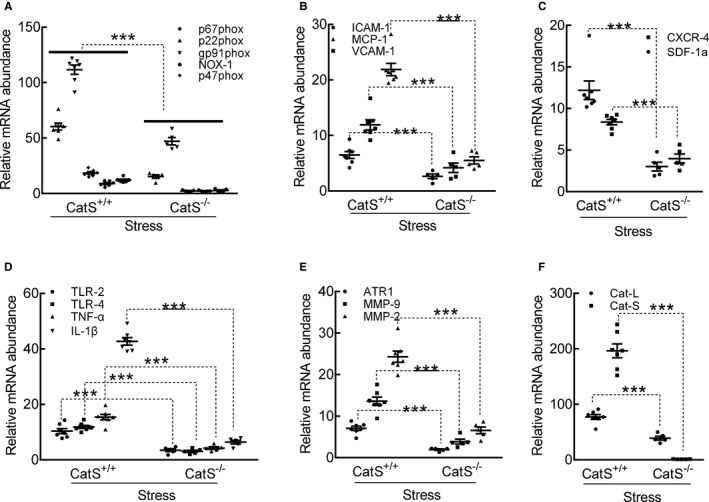Figure 11.

Cathepsin S deficiency (CatS−/−) mitigated the expressions of targeted oxidative stress–, inflammation‐, and proteolysis‐related genes in the carotid arteries of the stressed mice at day 4 after surgery. A through F, Quantitative polymerase chain reaction data show the levels of p22phox, gp91phox, p47phox, p67phox, nicotinamide‐adenine dinucleotide phosphate, reduced form, oxidase 1 (NOX‐1), intercellular adhesion molecule‐1 (ICAM‐1), vascular cell adhesion molecule‐1 (VCAM‐1), monocyte chemoattractant protein‐1 (MCP‐1), stromal cell–derived factor‐1α (SDF‐1α), C‐X‐C chemokine receptor‐4 (CXCR‐4), toll‐like receptor (TLR)‐2, TLR‐4, tumor necrosis factor (TNF)‐α, interleukin‐1β (IL‐1β), angiotensin II receptor 1α (ATR1α), matrix metalloproteinase (MMP)‐9, MMP‐2, cathepsin L (CatL), and CatS mRNAs. Results are mean±SEM (n=5–7). CatS+/+ indicates CatS wild type. ***P<0.001 vs corresponding CatS+/+ by 1‐way ANOVA, followed by Tukey post hoc tests.
